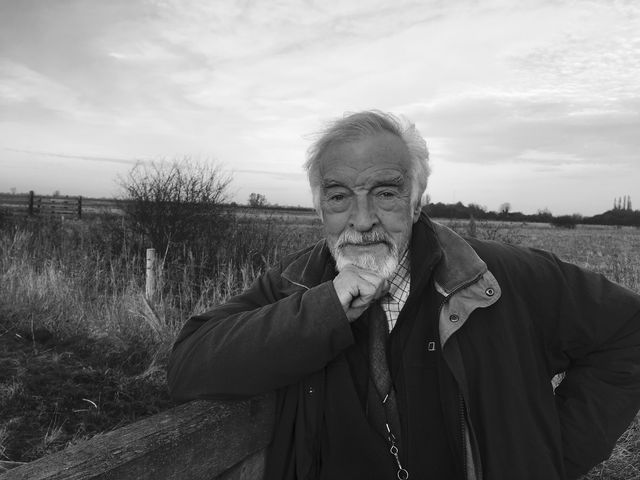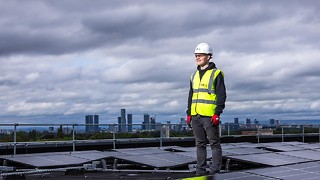Art in public: Interventions in the city centre
Tom Ward reflects on the hidden gems of Cambridge’s art scene

What do you think of when you think of art? It’s not a trick question. Portraits? A shark in a tank? A messy bed? While I’m certainly no Arthur Danto and would never claim to be educated about art – I’m a geographer at heart, as I ardently remind my friends on a far too regular basis – I can’t help but feel that there’s one form often left behind, that slips into the periphery: the nebulous ‘public art’.
“Public art is everywhere, and yet so often it fades into the streetscape”
So frequently given a bad name, brushed off as being bland, unimaginative, and a waste of money, public art is everywhere. We walk past it every day. It’s on the floor, it’s on walls, it’s even in the sky, and yet so often it fades into the streetscape, unnoticed and quietly brooding. In this four-part column Art in Public column, I’m hoping – an emphasis on hoping – to share with you some of the public art that Cambridge has to offer. In doing so, I hope to shine a light on the memories and conversations that come about from simply stopping and noticing the textures of the urban form around us, for it is, arguably, these moments that illuminate the narratives of a city.
This first instalment will focus on the busiest location in Cambridge: the area around Market Square. How many times have you walked through the market and thought about the colourful sculpture next to the Guildhall? One of my friends refers to it as the ‘jelly bean’ – you can see why. The vibrant palette of red, orange and metallic shades brings to mind something childlike, endearing. Completing the sculpture is a black and white top hat, upon which a cat sits and a few golden mice scurry. While unknown to many in the student community, longer-term residents will know that this is an affectionate tribute to Snowy Farr, a celebrated and well-known fundraiser who regularly collected for the Guide Dogs charity.
An eccentric character, Walter ‘Snowy’ Farr (MBE) entertained market goers at the end of Petty Curry for decades, raising more than £100,000 in his lifetime. Particularly well-known for his unconventional commitment to fundraising with animals, he could often be found in the Market Square wearing military attire, with a trained cat on his top hat and live mice running around the base of his hat, figuratively reflected in the sculpture. Unveiled in 2012, the sculpture was designed by Gary Webb after residents expressed the desire for a memorial to Snowy shortly after he died in 2007. While the sculpture hasn’t been without critics – the most vocal of which asserting ‘THIS IS NOT ART’ – it remains a keystone element in the landscape of Market Square, affectionately becoming a legacy to the tireless work of this stalwart Cambridge figure.
“Who gets to make decisions about what is valued as ‘public’? Whose visions are materialised in public space?”
While the Snowy Farr sculpture evokes memories of the city, often public art is decidedly less figurative: walk over towards Fisher Square (perhaps best known as being next to Lola’s) to be greeted by Peter Randall-Page’s Between the Lines, an offering that started life as a boulder in Finland. Commissioned as part of the Grand Arcade redevelopment in 2007, this granite geometric-geological centrepiece of the square is simultaneously tactile and repellent: are we to trace our fingers along the carved lines of its surface, to interrogate its landscape, or are we to take a step back, sit on one of the benches surrounding it, and consider it from afar? Between the Lines invites a response to broader questions of the relationships between an organic ‘humanity’ and a metaphysical ‘nature’, both a contemplative contrast to the surrounding complex of commercial and religious architecture and quietly assimilated into the colours of the square.
Finally, heading over to King’s Parade, walk along the street on the side of King’s College and, on the pavement, you will see a slab adorned with the message, High Maintenance Life. Carved and installed by German sculptor Ekkehard Altenburger in 1998, the piece asks us what public space itself means: who gets to make decisions about what is valued as ‘public’? Whose visions are materialised in public space? How easy is it to stage an intervention in public space? Altenburger evokes these questions by simply having installed the paving slab, for he did not seek permission to do so – those who saw him assumed he was a city council official.
“Assuming that the city speaks for itself will only serve to hide those who speak through the city”
The fact that even Cambridge City Council are unsure of the origins of the piece is clearly a testament to its success. Questions of who gets to be heard, seen, or remembered in public space are central to its form, questions which are more urgent today than ever before and yet idly hidden, beneath our feet. For, in the words of the art critic Rosalyn Deutsche, assuming that the city speaks for itself will only serve to hide those who speak through the city.
 News / Sidney May Ball cancelled6 November 2025
News / Sidney May Ball cancelled6 November 2025 News / Students launch women’s society excluding trans women31 October 2025
News / Students launch women’s society excluding trans women31 October 2025 News / Climate protesters rally against the Careers Service5 November 2025
News / Climate protesters rally against the Careers Service5 November 2025 Theatre / Hitler at the ADC? These guys pull it off5 November 2025
Theatre / Hitler at the ADC? These guys pull it off5 November 2025 News / New Christ’s library approved4 November 2025
News / New Christ’s library approved4 November 2025









